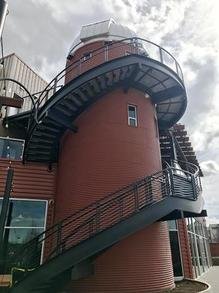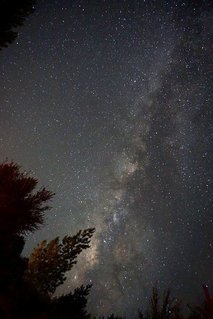Turn Down the Lights, See the Stars
Tue, 28 Mar 2017 18:55:00
If you’re like me, you’ve heard of “light pollution” but you’ve never really appreciated why it’s bad or how easy it is to prevent.
It wasn’t until we installed a research grade telescope that the proverbial “lights came on” for us here at Worthy. It’s common sense that turning down the lights at night when you don’t need them saves a bundle in energy costs and thus reduces atmospheric carbon dioxide.

But light pollution, (a.k.a, “Skyglow”) also negatively impacts natural ecosystems, insects and wildlife, in particular migrating birds. Excessive “blue light” - the light emanating from energy-efficient LEDs (Light Emitting Diodes), such as from your computer monitor - also exposes humans to harm.
Harms to Your Health
A 2016 study by the American Medical Association (AMA) affirmed that excessive exposure to blue-rich white light at night increases the risks for cancer, diabetes and cardiovascular disease. This finding is deeply troubling because LEDs are also touted for reducing carbon pollution and fossil fuel consumption. Even presumptive “win-wins” have a hidden cost.

Light pollution glare also obliterates our ability to look up and see the stars. Most humans these days live in densely populated urban areas. It’s fair to say that most city kids growing up today have never even seen the stars with their own eyes. They think the night sky is grey like smoke. It’s difficult to assess the harm done to generations of kids who are cut off from gazing at the stars and pondering the vastness and wonder of it all.
Well, we’re not on a high horse over here. Like many of our neighbors on the East Side, when we built our “Beertopia” we didn’t pay much attention to light pollution issues. Call it blissful ignorance. We were driven to acknowledge and assess our own contribution to skyglow only because we put in a telescope which everyone knows operates better in the dark.
Dark Sky Audit
So we called our friends at the Oregon Observatory at Sunriver and our electrician out to do a “dark sky” audit. It turns out we were, in fact, contributing to light pollution. Now, armed with this news, we are taking remedial steps. We are replacing bulbs, shielding blindingly bright LED lights with red or amber glass, tilting lights downward. We’re eliminating unnecessary lights. We’re installing motions sensors. And we’re putting most of our exterior and parking lot lights on timers.
When you consider the benefits of all of these minor changes, the costs were meager. In fact, we will even be eligible for a rebate from The Energy Trust of Oregon for swapping out our incandescent bulbs with appropriate LED lights.


We hope by taking these small steps, Worthy will be doing our part to darken the sky so the stars can come out to play. Moreover, we’ll be doing our part to help migratory birds, insects and other wildlife, including humans. We’ll save on our energy bills without sacrificing security.
What Are We Doing?
And, here’s a big one, we’ll be setting an example for the Bend’s east side. If more homes and businesses take the same steps, guests at our Hopservatory just might be lucky enough to see bits and pieces of the big, bright and beautiful Milky Way in all of its glory.
Finally, think of the dark starry night as a wilderness area. The swath of land between Bend, Reno, Boise and Spokane is one of largest remaining dark skyscapes in North America. It's a section that, if kept dark, will allow humans to look up and see the same untainted bright and wondrous stars and orbs that inspired great thinkers like Socrates, Copernicus, Galileo, Newton, Halley and Van Gogh many eons ago.
RGW
March 28, 2017
To learn more about the impacts of light pollution on human health, wildlife and insects, energy consumption and our cultural heritage, please click here.
For an easy to follow list of easy to install and affordable light pollution reducing or eliminating technical solutions, please click here.

